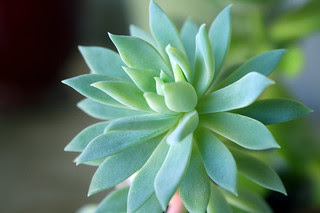Basil, So
Many Choices, So Little Time
I’m a
Basil lover. I currently have 6 basil
plants growing in my herb garden;
·
2 Sweet Basil Plants
·
1 Thai Basil Plant
·
1 Boxwood Basil Plant
·
1 Greek Basil Plant
·
1 Purple Basil Plant
Basil is
one of the easiest herbs to grow and harvest.
There are
many different types of basil to grow. Basil is used world-wide for great added
flavor to many dishes. Basil may have smooth, crinkled or ruffled leaves. The
foliage may be green or purple. It is appreciated for its flavor and aroma and
also for its foliage colors and forms. You can try mixing different leaves for
a new twist of flavors. Here are the different types of basil and tips on how
to grow basil.
DWARF BASIL: These plants are great for tucking into
small spaces, containers and window boxes. There are varieties such as Spicy
Globe and Fine Green. They are easy to grow and maintain. These compact
varieties can grow up to twelve inches tall and they have small leaves. Dwarf
basil is also a great plant to use as an edging plant in a flower bed.
SCENTED BASIL: These include plants with cinnamon, lemon,
lime, licorice and other flavors. These flavors are infused with the taste and
aroma of basil. They have small leaves and grow to about fifteen inches tall. Many
people like to grow this type of basil because of the great scents it adds to a
home.
PURPLE BASIL: Purple basil is a very attractive
addition to a garden. They add a great accent to a salad. They have beautiful
purple leaves and their flowers are usually pink or lavender. Some have purple
stems as well as purple foliage.
THAI BASIL: This plant tends to be more compact then
other basils. It has smaller and thinner leaves. Thai basil has a delicate
clove flavor and scent.
ITALIAN BASIL: This basil is the most widely grown and
used. It is used commonly in tomato based sauces. Some varieties have smooth
green leaves and others have crinkly foliage. This plant usually grows to about
fifteen inches tall and is easy to grow and maintain.
After you have decided on
which basil to grow, follow these easy instructions for a successful
harvest. You will plant after all signs of frost are
gone. Basil needs rich, moist soil so you will need to add compost onto poor or
sandy soil. Proper spacing is very important so you will need to plant seeds or
plants about twelve inches apart. For the dwarf types, plant about six to eight
inches apart. Make sure the soil is moist not wet. Apply mulch to conserve
moisture. When plants reach about six inches tall pinch stem tips to promote
leaf production. Every two weeks cut stems just above a leaf node. If plants go
to flower, cut them back by one-third. You should have great success with your
basil plants as long as you make sure the plants have good air circulation and
good soil drainage. You can also give them a monthly feeding of a nutrient rich
fertilizing of fish-emulsion and seaweed solution.
Here are some pictures of
the most common Basil plants and what they are used for:
 |
| Sweet Basil |
Sweet Basil and Classic
Italian basil can be used in tomato sauce, pesto and salads.
 |
| Thai Basil |
Thai Basil is more
tender and more intensely flavored than Sweet Basil. Thai basil seeds are
highly aromatic with a licorice-basil aroma.
Thai basil is great in both Thai and Italian recipes. It is also a wonderful
container plant with late flowering and reaches a height of 24″.
 |
| Round Midnight Basil |
Round Midnight Basil This highly aromatic
purple leaf basil is a hybrid, with shiny leaves and its dense habit promises a
summer of fragrant and tasty pleasure. This is a garden attention-getter, with each
plant full and round, 10-12″ tall, 8-10″ across, with showy spikes of light
purple blooms.
 |
| Lemon Basil |
Lemon Basil – An attractive plant, spreading silver-green leaves with a lemony aroma and flavor for
potpourris, tea, chicken, fish, vegetables and herb vinegars. Lemon Basil is native
to northwest India.
 |
| Greek Basil |
Greek Basil is native to Southeast Asia. Greek basil has been
used in cooking and for fragrances for centuries. This plant was brought to
Europe in the Middle Ages and it has thrived in the Mediterranean region, as
well as by the Caspian and Black Seas. Greek basil consists of tiny leaves on
dome shaped, 8″ tall plants. This basil is great with tomatoes, in salads or
sauces and is especially interesting in the garden.
 |
| Cardinal Basil |
Cardinal Basil flaunts a unique
scent, rich and heady with a touch of spice. Strong, deep burgundy stems hold
the flowers above the smooth, bright green leaves, ensuring a vibrant show
throughout the summer even as you continue harvesting fresh leaves. Cardinal Basil
is a beautiful standout in the herb patch and a flavorful addition to the
ornamental bed.
 |
| Boxwood Basil |
Boxwood Basil - Tight mounds of small
leaves that resemble boxwood plants make a highly ornamental edging for the
patio or for a container by the kitchen door. Boxwood basil is bred in France
for a highly flavorful pesto ingredient. It is a beautiful basil variety that
makes a fine garden companion.
 |
| Summerlong Basil |
Summerlong
Basil - Very compact, tight bushes, slow to bolt, densely covered with
shiny, bright green leaves. Great for pots and ornamental edging in vegetable
beds.
 |
| Lime Basil |
Lime Basil A rare and hard to find seed variety. Lime
basil is sweet and fragrant with a mild citrus taste. The lime scent of the
bright green, lance-shaped leaves pair perfectly with lemon basil, for a full
explosion of tangy fresh flavor. Excellent for flavoring sauces, dressings and
desserts.














